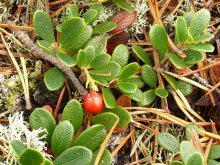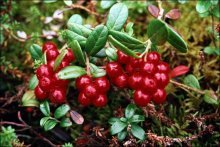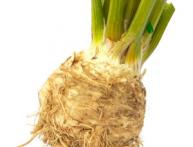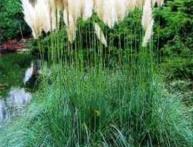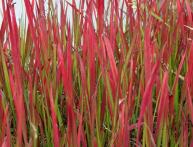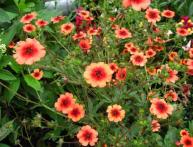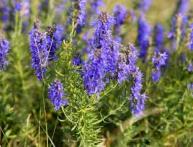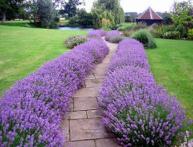Bearberry or bear's ear grass
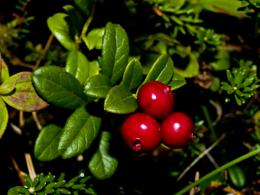
Very often, useful and irreplaceable plants grow not only next to us, but also almost right under our feet. This is primarily plantain, dandelion, bearberry herb and many other flowers and herbs that can safely be called medicinal. Let's focus on one of them - bearberry. In addition, it can be planted in the garden, as it is quite decorative and can be added to various compositions.
Content:
Botanical description of bearberry
Bearberry is a plant from the Ericaceae family. Widely distributed throughout almost the entire territory of the European part of Russia, Siberia, and the Far East.
Very often in clearings, along forest roads and paths you can see small spreading bushes with small oval-shaped leaves. The lower part of the leaf is lighter and not shiny, the upper part is dark, green, smooth, glossy. The plant covers fairly large spaces with a continuous hard carpet.
The height of adult plants can be from 5-6 cm to 30-40 cm. In the upper part of the plant, at the end of May, an inflorescence is formed - a raceme, formed by several pink and white flowers - water lilies. When the flower fades, a drupe fruit is formed in its place, similar in appearance to a red berry with a diameter of 6-7 mm, inside which there is white pulp and five seeds, ripens by September, and tastes sour.
The plant was named bearberry precisely because berry pulp, similar to oatmeal.And from Latin the name can be translated as “bear grapes”. The fruits of the plant serve as food for forest birds. It is of economic importance as a medicinal plant used in folk and official medicine. Recently, bearberry has received attention as an ornamental plant for landscape design.
Bearberry in the garden
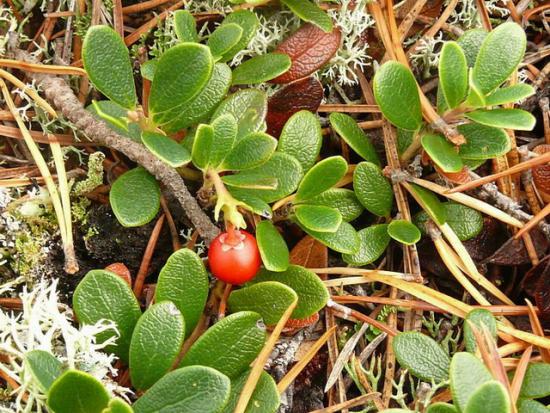
In the wild, bearberry often grows in poor, dry, rocky soils. This feature is also used when arranging rocky gardens, and is also planted as a ground cover plant when arranging mixed decorative heather compositions. Looks good on retaining walls, rock gardens and rock gardens. Perfectly complements conifer plantings:
- junipers
- cypress trees
- decorative fir trees
- spherical thuja
To plant bearberry, you will need light alkaline soil with a pH value of no more than 4.5. It is best to prepare a mixture of peat, fallen pine and spruce needles, sand, and garden soil.
You can plant both seeds and seedlings. Bearberry seeds have good germination. Sowing can be done before winter. Or you can sow seedlings in mini-greenhouses on the windowsill at the end of winter. But it is most convenient to purchase ready-made seedlings.
When planting seedlings in spring, it is necessary to make a continuous furrow in the soil up to 15 cm deep. Place bearberry bushes at a distance of 25-30 cm from each other, cover them with soil, lightly compact them, and water them with water without fertilizers.
The first flowering can be seen after 7 years, but during this time the plant is actively growing. When planning a composition, it is important to remember that the bearberry will need at least three times more space and to foresee this point in advance.
Plant care is simple:
- thinning
- application of phosphorus fertilizer
- weeding
- loosening the soil
Use as a medicine
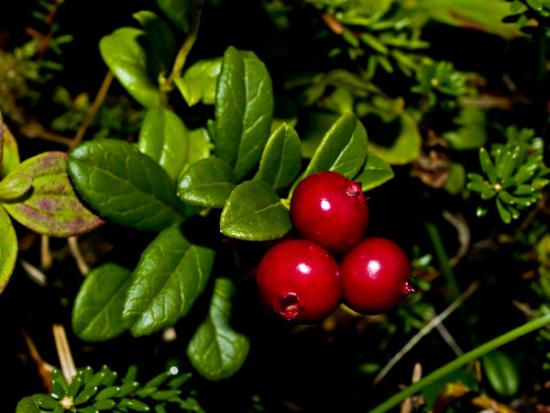
In the pharmacy chain, bearberry herb is sold under the registered name "Bearberry Leaf" or "Uvae ursi folium". In the pharmaceutical industry, arbutin is obtained from bearberry, a substance used in medicine and cosmetology.
As part of creams, arbutin gives an excellent whitening effect; it can be used to eliminate pigment spots of various origins:
- from ultraviolet
- age
- hormonal
For these purposes, you can use a decoction of bearberry at home, rubbing it on the skin. In official medicine, bearberry leaves are prescribed for inflammatory diseases of the bladder and kidneys. The high content of arbutin provides an anti-infective effect. Prescribed by a doctor. Previously, it was believed that bearberry leaves should be brewed with boiling water, but in this case, tannins are also released into the infusion, which sometimes complicates the intake of the decoction, causing a gag reflex.
German doctors discovered that when left in cold water for a long time, arbutin comes out into the water, but tannins do not. Therefore, to treat inflammatory processes in the bladder, pour 2 teaspoons of herbal raw materials into a glass of cold water and leave for a day, stirring occasionally. Take within a week; to increase effectiveness, the infusion should be warmed up a little and a pinch of soda added to the cup. If there is no progress in treatment, the doctor will change the drug.
Also based on bearberry leaves, Uriflorin tablets are produced, which have a diuretic and anti-inflammatory effect and are prescribed for cystitis and urethritis. In folk medicine, bearberry is called “bear ears” and is used for chronic diarrhea and cough. However, intolerance to the decoction and vomiting are possible.
The use of preparations from bearberry leaves may have contraindications; consultation with a doctor is advisable. Thus, bearberry grass is not only an ornamental, but also a useful medicinal plant.
Description and use of bearberry in the video:
Interesting information about the vegetable garden

